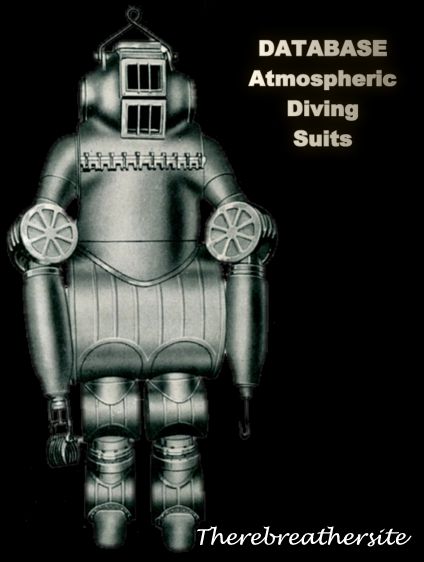
Thompson’s patent shows a protective shell over the ball joints of a diving suit. The reason may be that the joints have a high precision and once damaged the surface can no longer seal on the seals.

The present invention relates to an armoured diving suit made of metal, the members of which are interconnected by waterproof closed ball joints. According to the present invention, the ball joints of the diving suit are enclosed by protective sheaths. This precautionary measure is of great use and importance, since the well-being and condition of the diver naturally depend on the perfect condition of the joints and it must therefore be ensured that any possible external damage is completely avoided.
These protective devices are preferably in the form of spherical shells and when the nature of the joint allows, they may be fitted as parts. The shells are connected to the hinged parts they protect in such a way that they can move over each other. In this way it is possible to arrange that one shell can act as a limiting projection for the movement of the ball joint in the case of freely movable joints, for example, those of the hand and foot.
In the case of such joints rotating about a fixed axis, for example the thigh or knee joint, it is possible to control even more than two shells moving ‘on top of each other’, in the sense that intermediate shells can be mounted to be movable around the joint pivot points, which intermediate shells will be movably connected to the shells attached to the joint members. One form of diving suit arrangement according to the present invention is illustrated on the accompanying drawings by way of example, and is shown partially in cross section.
All of the illustrated joints of the suit are ball joints and are provided with enveloping protective covers. The free ball joints, such as the hand and foot joints, consist of two metal caps a a1 and b bl which slide over each other in the form of spherical segments. The caps a b are therefore carried by one member and the caps al bl are carried by the other member and it is clear that the edges of these caps will act as limiting stops for the movement of the ball joints.
The joint C is arranged as a hinged joint on the side adjacent to the body.

Therebreathersite was founded by Jan Willem Bech in 1999. After a diving career of many years, he decided to start technical diving in 1999. He immediately noticed that at that time there was almost no website that contained the history of closed breathing systems. The start for the website led to a huge collection that offered about 1,300 pages of information until 2019. In 2019, a fresh start was made with the website now freely available online for everyone. Therebreathersite is a source of information for divers, researchers, technicians and students. I hope you enjoy browsing the content!
